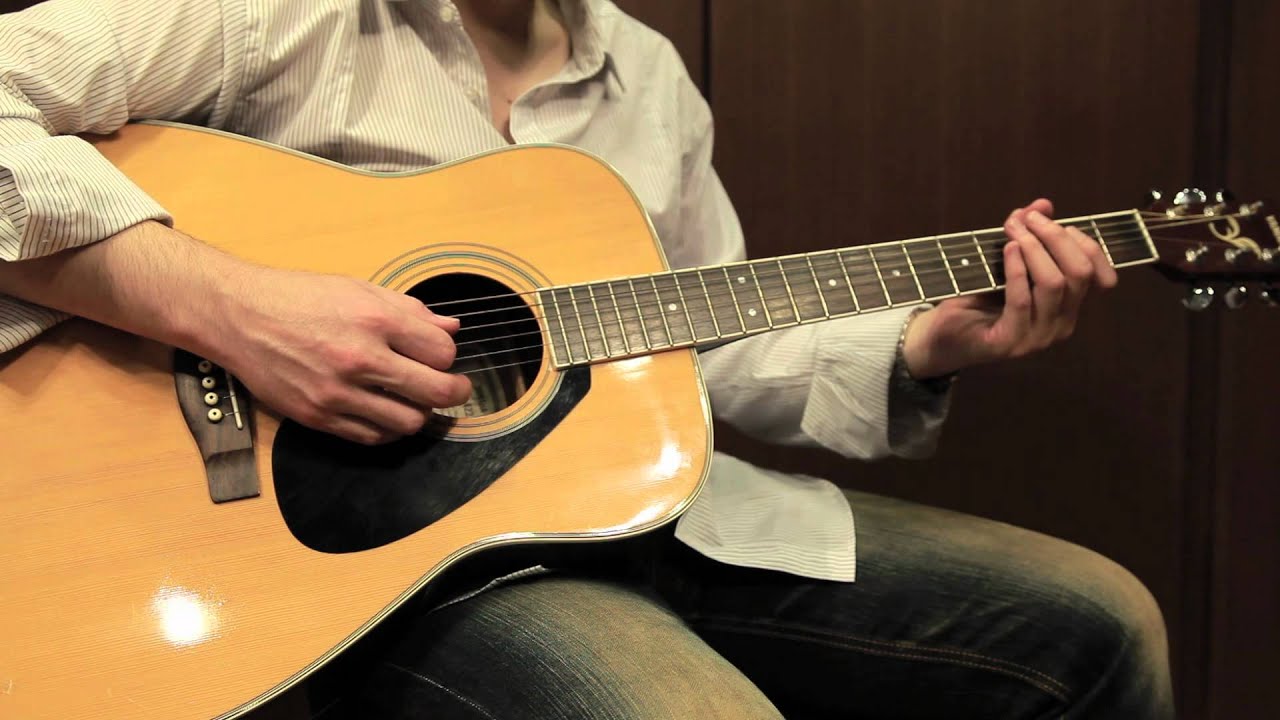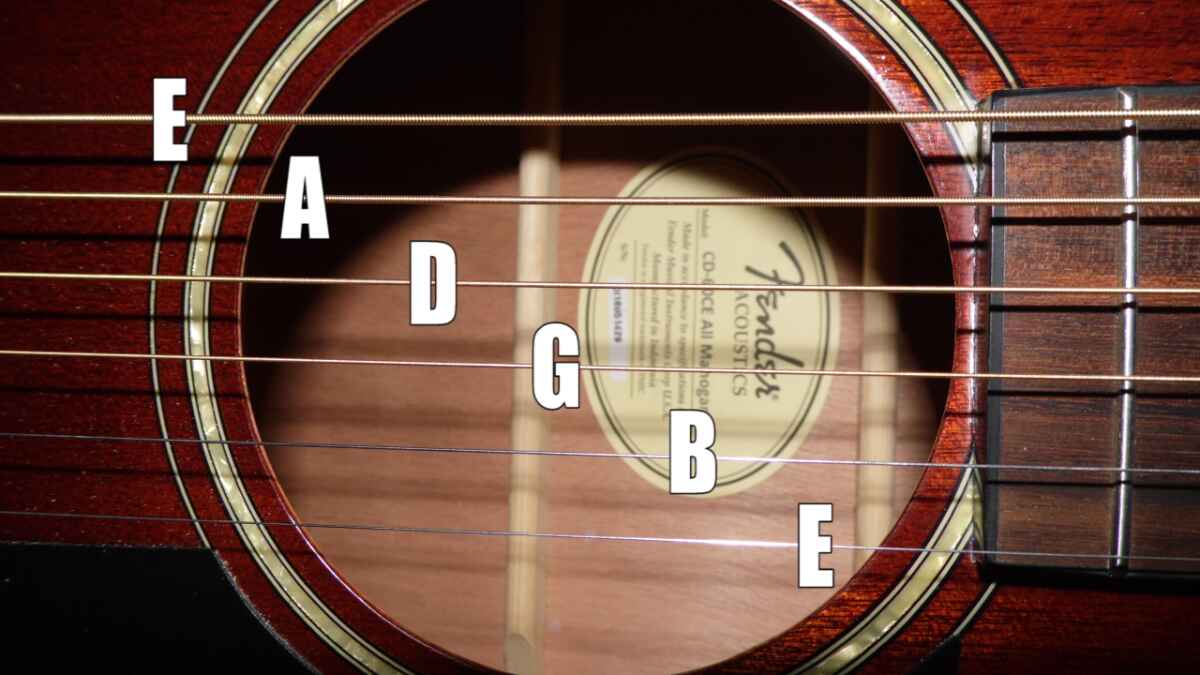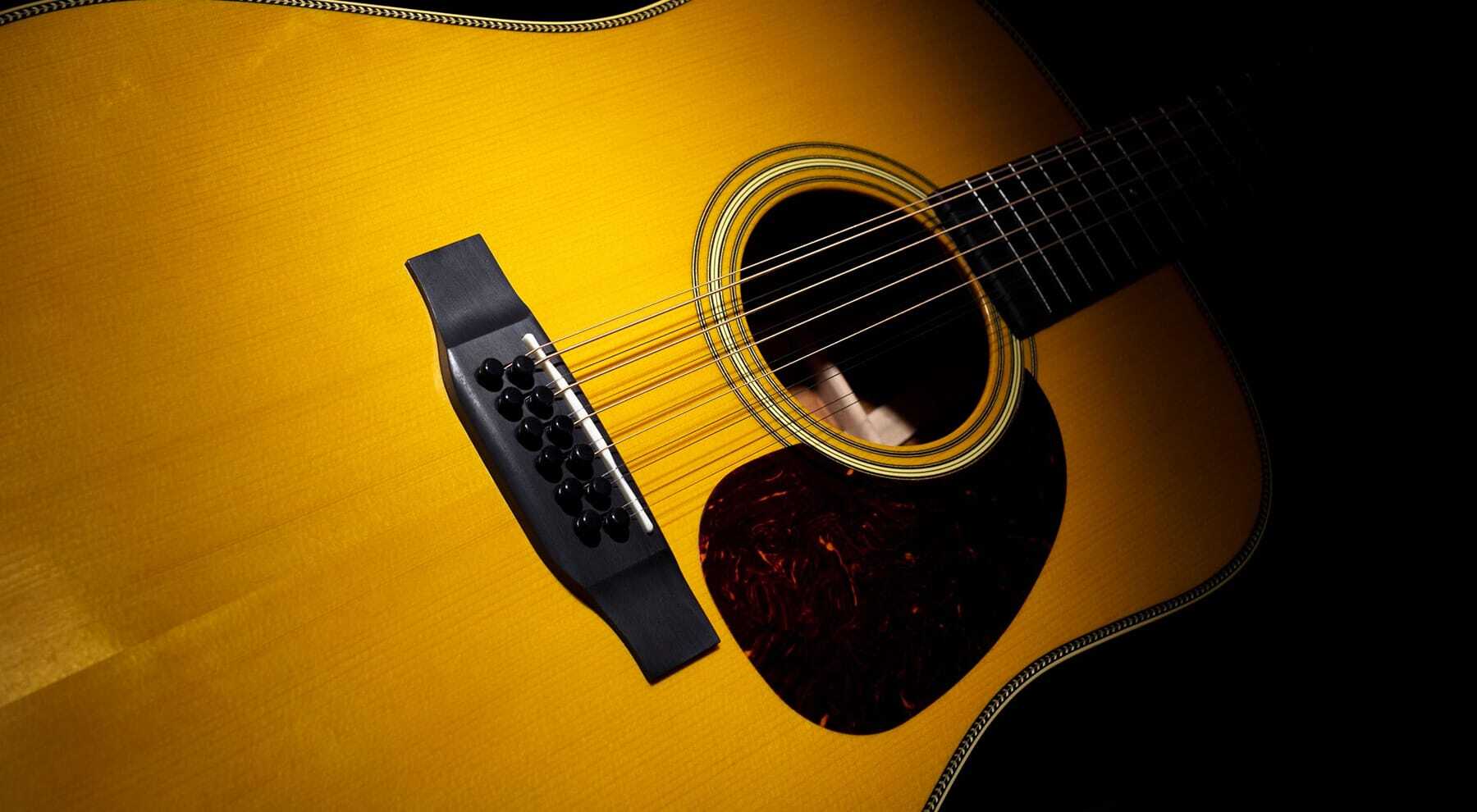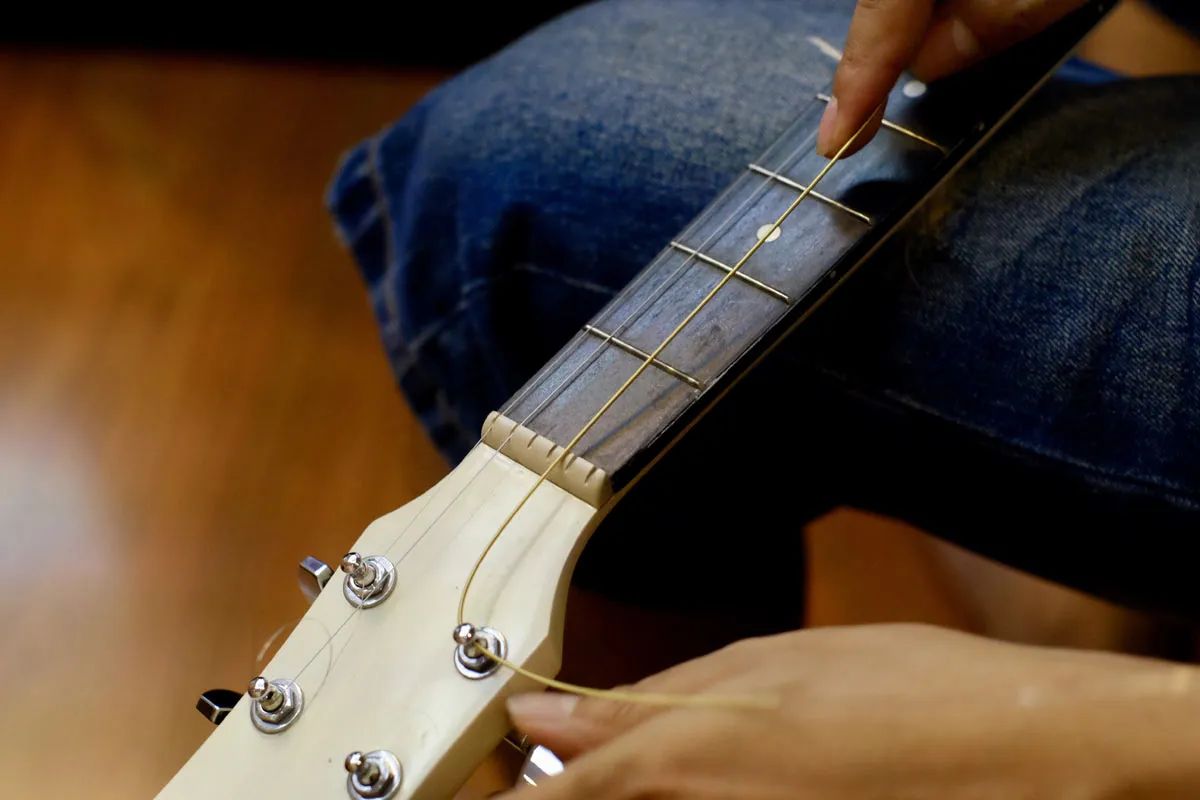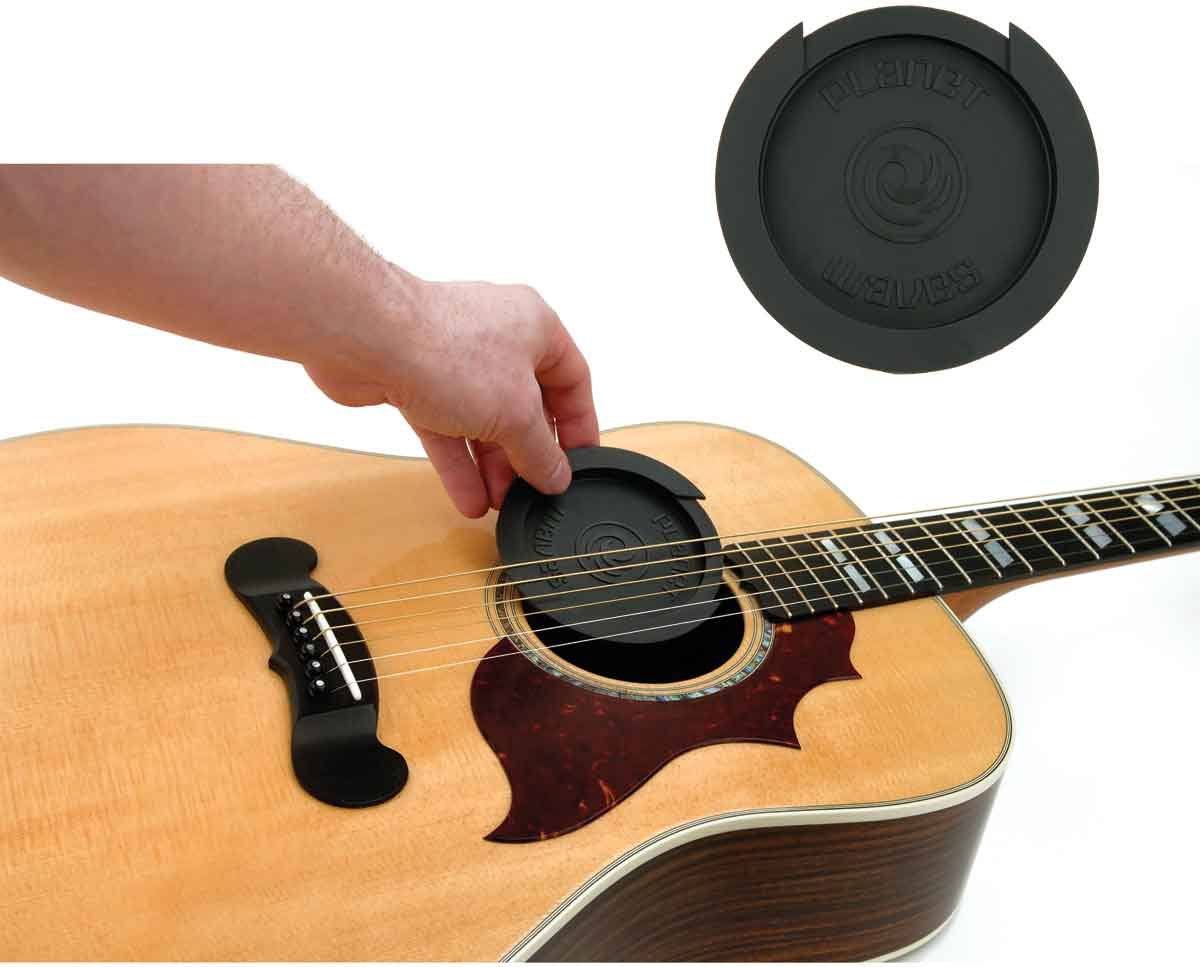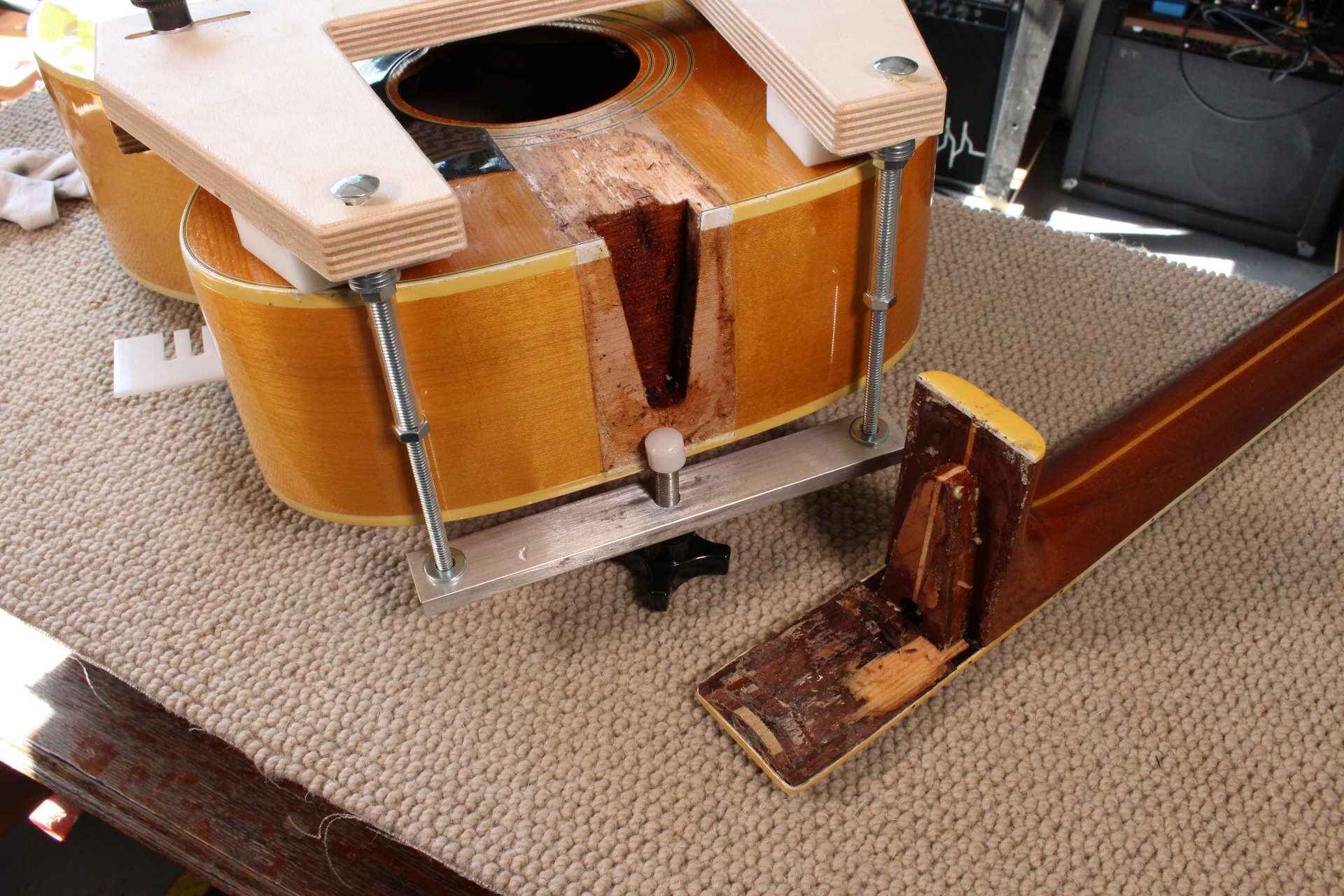Introduction
Tuning a 6-string acoustic guitar is an essential skill that every guitarist should master. A properly tuned guitar not only ensures that your instrument sounds its best, but it also allows you to play in tune with other musicians or along with your favorite songs. Whether you’re a beginner or an experienced player, understanding how to tune your guitar is fundamental to your development as a musician.
In this article, we will explore various methods for tuning a 6-string acoustic guitar. We will cover both conventional methods, such as tuning by ear or using a digital tuner, as well as alternative approaches like smartphone apps or pitch pipes. By following these techniques, you will be able to keep your guitar in perfect tune and optimize your playing experience.
Before diving into the different tuning methods, it’s important to recognize the significance of proper guitar tuning. When your guitar is out of tune, it can lead to dissonance, off-key melodies, and a generally unpleasant listening experience. Additionally, playing an out-of-tune guitar can undermine your ability to play with others, as it becomes nearly impossible to create harmonious sounds when each instrument is not in sync.
Proper tuning is not just important for the quality of your sound, but it also contributes to the overall playability of your guitar. When your strings are tuned correctly, it becomes easier to play chords, execute melodies, and perform intricate fingerpicking patterns. Moreover, proper tuning ensures that your guitar strings maintain the proper tension, which can prevent unnecessary strain on your instrument.
Now that you understand why tuning is crucial, let’s delve into the various methods you can utilize to achieve the perfect tune for your 6-string acoustic guitar. Whether you prefer the traditional approach of tuning by ear or the convenience of a digital tuner, we’ve got you covered. So, grab your guitar, get ready to tune, and let’s dive into the world of acoustic guitar tuning techniques!
The Importance of Proper Tuning
Proper tuning is the foundation of any great guitar playing experience. It sets the stage for your entire musical journey, ensuring that your guitar sounds its best and allows you to express yourself accurately. Here are some key reasons why proper tuning is of utmost importance:
First and foremost, proper tuning ensures that your guitar produces the correct pitch for each string. When all the strings are tuned to the right notes, you can create harmonious chords and play melodies that are in tune with other instruments or backing tracks. This is crucial for collaboration and playing live with other musicians.
Furthermore, playing in tune with proper guitar tuning helps in developing your ear for music. By consistently practicing and playing in tune, you train your ears to recognize different intervals and notes. This skill becomes invaluable as you progress and start playing more complex music or improvising.
Another benefit of proper tuning is that it enhances the overall sound quality of your guitar. When the strings are in tune, they resonate properly and produce a clear, balanced tone. On the contrary, an out-of-tune guitar sounds dissonant, lacks sustain, and can be unpleasant to listen to.
Moreover, proper tuning ensures that you get the best playing experience. When your guitar is in tune, it is easier to play chords, execute riffs, and perform intricate techniques. This is because each string is at the correct tension, allowing for optimal finger placement and control.
Additionally, maintaining consistent tuning helps prolong the life of your guitar strings. Tuning your guitar to the right pitch reduces unnecessary strain on the strings, which can lead to premature breakage or wear. By keeping your guitar properly tuned, you can save money and avoid the hassle of constantly replacing strings.
Overall, proper tuning is the cornerstone of a great guitar playing experience. It not only ensures that your instrument sounds its best but also enhances your ability to play in tune, develop your musical ear, and enjoy a better overall playing experience. So, make it a habit to check and adjust your guitar’s tuning regularly, and you’ll reap the rewards in your musical journey.
Understanding the Basics
Before we dive into the various methods of tuning your 6-string acoustic guitar, it’s important to have a basic understanding of the instrument and its tuning system.
The standard tuning for a 6-string acoustic guitar, starting from the thickest string to the thinnest, is E-A-D-G-B-E. This means that the lowest-pitched string is tuned to an E, the next string to an A, and so on. The highest-pitched string is also an E, just two octaves higher than the lowest string. This tuning system is commonly known as “E standard.”
Each string is identified by a number, with the thickest string being the 6th string and the thinnest string being the 1st string. This numbering convention is important when referencing specific strings in tuning instructions or when discussing chord and scale shapes.
To achieve the correct pitch for each string, it’s essential to know the corresponding note names. Here’s a breakdown of the note names for each string in standard tuning:
- 6th string (thickest): E
- 5th string: A
- 4th string: D
- 3rd string: G
- 2nd string: B
- 1st string (thinnest): E (two octaves higher)
Understanding the basics of guitar tuning and the standard tuning system is crucial for navigating the various tuning methods we’ll explore. It provides a solid foundation for achieving the desired pitches and playing in tune.
Now that you have a grasp of the fundamentals, let’s move on to exploring different methods for tuning your 6-string acoustic guitar. Whether you prefer tuning by ear, utilizing a digital tuner, or trying out alternative tuning methods, there’s an approach that will suit your preferences and needs.
Tune by Ear
Tuning your guitar by ear is a fundamental skill that every guitarist should develop. While it may take some practice to develop a good ear for pitch, this method allows you to tune your guitar in any situation, even if you don’t have access to a tuner or an app.
To tune your guitar by ear, follow these steps:
- Start by tuning the 6th string (E string) to a reference pitch. You can use another instrument, a tuning fork, or an online reference tone as a guide. Listen carefully to the pitch and adjust the tension of the string until it matches the desired pitch.
- Once the 6th string is in tune, you can use it as a reference to tune the remaining strings.
- Press down the 5th fret of the 6th string and play the open 5th string (A string). Adjust the tension of the 5th string until it sounds the same as the 6th string when played at the 5th fret.
- Next, press down the 5th fret of the 5th string and play the open 4th string (D string). Adjust the tension of the 4th string until it matches the pitch of the 5th string at the 5th fret.
- Continue this process for the remaining strings: press down the 5th fret of the 4th string to tune the open 3rd string (G string), the 5th fret of the 3rd string for the open 2nd string (B string), and the 4th fret of the 2nd string to tune the open 1st string (high E).
- Keep checking and adjusting the tension of each string until they all sound in tune with each other and match the desired pitch for their respective strings.
Remember to listen carefully and compare the pitch of each string to the reference pitch. You can also use harmonics, where you lightly touch the string at certain points to produce a pure and clear sound, to check the tuning accuracy.
Tuning by ear may require some practice and a good musical ear, but once you develop this skill, you’ll be able to tune your guitar anytime, anywhere. It’s a valuable skill for any guitarist and can be a useful backup method when other tuning options are unavailable.
Now that you’ve learned how to tune by ear, let’s explore other convenient methods, such as using a digital tuner or smartphone app, that can assist in achieving accurate guitar tuning.
Use a Digital Tuner
Using a digital tuner is one of the most popular and convenient methods for tuning a 6-string acoustic guitar. Digital tuners provide precise and accurate tuning information, making it easy for both beginners and experienced guitarists to achieve optimal tuning.
To tune your guitar using a digital tuner, follow these steps:
- Turn on the digital tuner and select the guitar tuning option, which is typically denoted by the letter “G” or “GUITAR”.
- Clip the tuner onto the headstock of your guitar, ensuring that it is securely attached and can pick up vibrations from the strings.
- Pluck the 6th string (E string) and observe the tuner’s display. The tuner will indicate whether the string is sharp (tuned too high) or flat (tuned too low) by using arrows, lights, or a needle gauge.
- Adjust the tension of the 6th string by turning the tuning peg until the tuner indicates that the string is perfectly in tune.
- Move on to tune the 5th string (A string), repeating the process of plucking the string and adjusting the tension until it is in tune according to the tuner’s display.
- Continue this process for the remaining strings: tune the 4th string (D string), 3rd string (G string), 2nd string (B string), and 1st string (high E).
- Once all the strings are in tune according to the digital tuner, your guitar’s tuning is complete and ready to play.
Digital tuners are highly accurate and reliable, providing real-time feedback on the pitch of each string. They are available in various forms, including clip-on tuners that attach directly to the headstock, pedal tuners for live performances, and mobile apps with built-in tuners. Whichever type of digital tuner you choose, it will greatly assist in achieving precise guitar tuning.
Using a digital tuner eliminates the potential human error that may occur when tuning by ear and ensures that your guitar is perfectly in tune with excellent accuracy. It’s a great tool for beginners learning to tune their guitars and for more experienced players who want dependable and consistent tuning results.
Now that you’re familiar with tuning using a digital tuner, let’s explore another convenient method using smartphone apps that can turn your mobile device into a tuner on-the-go.
Utilize a Smartphone App
With smartphones becoming an essential part of our daily lives, it’s no surprise that they can also serve as useful tools for tuning your 6-string acoustic guitar. There are numerous guitar tuner apps available that can turn your smartphone into a portable and convenient tuning device.
To utilize a smartphone app for tuning your guitar, follow these steps:
- Search for and download a reputable guitar tuner app from your smartphone’s app store. There are plenty of free and paid options available.
- Launch the app and grant access to the microphone so that it can detect the pitch of your guitar’s strings.
- Select the appropriate tuning option (usually “Guitar” or “Acoustic Guitar”) within the app.
- Pluck the 6th string (E string) and observe the app’s display. It will indicate whether the string is sharp or flat, and provide guidance on how to adjust the tension to achieve the correct pitch.
- Proceed with tuning the remaining strings, following the same process for each string.
- Continue to pluck each string and make adjustments until the app indicates that all the strings are in tune.
Using a smartphone app for tuning your guitar offers several advantages. Firstly, it eliminates the need for additional physical equipment like dedicated tuners. Secondly, app-based tuners are often accurate and provide real-time feedback, similar to digital tuners. Additionally, many apps offer additional features such as alternate tunings, chord diagrams, and metronomes, which can be beneficial for practicing and learning new songs.
It’s important to note that when using a smartphone app as a tuner, you should be mindful of any ambient noise or interference that could affect the accuracy of the microphone. Find a quiet space and ensure that the app can clearly pick up the sound of your guitar strings for the most reliable tuning results.
Smartphone tuner apps are a convenient and portable solution for tuning your guitar on-the-go. They combine accuracy, ease of use, and additional features to enhance your tuning experience.
Now that you’ve explored using a smartphone app as a tuning option, let’s delve into another traditional method known as using a pitch pipe for tuning your guitar.
Employ a Pitch Pipe
Using a pitch pipe is a traditional and reliable method for tuning your 6-string acoustic guitar. A pitch pipe is a small device that produces a specific pitch when blown into, allowing you to tune your guitar strings to the corresponding notes.
To employ a pitch pipe for tuning your guitar, follow these steps:
- Obtain a pitch pipe specifically designed for guitar tuning. These can be found at music stores or online.
- Begin with the 6th string (E string) and blow into the corresponding hole on the pitch pipe that produces the E note. Listen carefully to the pitch and pluck the 6th string on your guitar. Adjust the tension until the pitch of the string matches the E note from the pitch pipe.
- Repeat the process for the 5th string (A string), the 4th string (D string), the 3rd string (G string), the 2nd string (B string), and the 1st string (high E).
- Continue to pluck each string and adjust the tension until they match the pitch produced by the pitch pipe.
Using a pitch pipe provides a simple and straightforward method for achieving accurate guitar tuning. It is especially useful in situations where you may not have access to a digital tuner or smartphone app.
However, it’s important to note that pitch pipes have limitations. They provide a fixed pitch for each string, which may not be as precise as electronic tuners or apps. Additionally, pitch pipes rely on your ability to match the pitch by listening, which can be challenging if you don’t have a well-developed musical ear.
Nevertheless, a pitch pipe is a reliable tool and can serve as a backup option when other tuning methods are unavailable. It’s a portable and convenient solution that has been utilized by guitarists for decades.
Now that you’ve explored using a pitch pipe for tuning your guitar, let’s move on to another widely used method known as a clip-on tuner.
Consider a Clip-On Tuner
A clip-on tuner is a versatile and practical tool for tuning your 6-string acoustic guitar. This type of tuner attaches directly to the headstock of your guitar and picks up the vibrations of the strings to determine their pitch. Clip-on tuners offer convenience, accuracy, and ease of use, making them a popular choice among guitarists of all skill levels.
To use a clip-on tuner to tune your guitar, follow these steps:
- Attach the clip-on tuner securely to the headstock of your guitar. Ensure that it is positioned in a way that it can detect the vibrations of the strings.
- Turn on the tuner and select the guitar tuning mode.
- Pluck each string individually, starting with the 6th string (E string). Observe the tuner’s display, which will indicate whether the string is in tune, sharp, or flat.
- Adjust the tension of the string as needed, using the tuning pegs, until the tuner indicates that it is in tune.
- Repeat the process for the remaining strings, tuning the 5th string (A string), 4th string (D string), 3rd string (G string), 2nd string (B string), and 1st string (high E).
- Continue to pluck each string and make any necessary adjustments until the tuner displays that all the strings are perfectly in tune.
One of the key advantages of a clip-on tuner is its portability. You can easily take it with you wherever you go and tune your guitar at any time. Clip-on tuners are also known for their accuracy, providing real-time feedback on the pitch of each string.
Additionally, clip-on tuners often feature a bright display that can be easily seen even in low-light situations, making them suitable for live performances or practicing in dimly lit environments. They are user-friendly and ideal for beginners, as they eliminate the guesswork and provide clear visual guidance for tuning.
Clip-on tuners are available in various price ranges and models, offering different features and functionalities. Consider your specific needs and budget when choosing a clip-on tuner that suits you best.
Now that you’re familiar with using a clip-on tuner, it’s worth exploring alternative tuning options and techniques, such as alternate tunings, to expand your creative possibilities on the guitar.
Explore Alternate Tunings
While standard tuning (E-A-D-G-B-E) is the most common tuning for a 6-string acoustic guitar, there are a plethora of alternate tunings that can unlock new musical possibilities and enhance your playing experience. Alternate tunings involve adjusting the pitch of the strings to create unique harmonic qualities and open up unconventional chord shapes and resonances.
Here are a few popular alternate tunings to explore:
- DADGAD: In this tuning, the guitar’s strings are tuned to D-A-D-G-A-D. DADGAD is commonly used in folk, Celtic, and acoustic blues music, and it produces a rich and resonant sound. It allows for unique fingerings and is particularly useful for playing drone-like sounds and modal melodies.
- Drop D: Drop D tuning involves dropping the 6th string down to a D. The rest of the strings remain in standard tuning. This tuning is popular in rock and metal genres and allows for power chords with a heavier, low-end sound. It also facilitates easy access to bass notes and creates a fuller sound when playing in lower registers.
- Open G: Open G tuning is achieved by tuning the guitar to D-G-D-G-B-D. When strummed without fretting any notes, it produces a G major chord. Open G tuning is widely used in slide guitar playing and is favored by blues and country musicians. It allows for easy slide transitions and creates a resonant sound with rich overtones.
- Open D: Open D tuning is characterized by tuning the guitar to D-A-D-F♯-A-D. Similar to open G tuning, it creates an open chord when strummed without any fretting. Open D tuning is associated with slide guitar playing, folk music, and various acoustic styles. It offers different chord voicings, rich harmonies, and convenient intervals for slide melodies.
These are just a few examples of the vast range of alternate tunings available. Exploring different tunings can inspire fresh ideas, spark creativity, and expose you to new sonic landscapes. It’s worth experimenting with various tunings to discover unique chord voicings, harmonies, and melodic possibilities that can invigorate your playing style.
Keep in mind that alternate tunings may require adjustments to your playing technique and familiarity with different chord shapes. Take the time to explore and practice in these tunings, and you’ll be rewarded with a diverse repertoire of sounds at your fingertips.
Now that you’ve delved into alternate tunings, let’s move on to an important aspect of guitar tuning: maintaining consistent tuning over time.
Maintain Consistent Tuning
Once you’ve achieved proper tuning for your 6-string acoustic guitar, it’s crucial to maintain that tuning over time. Guitar strings naturally stretch and settle, causing them to go out of tune. Consistently monitoring and adjusting the tuning of your guitar will ensure that it sounds its best and is always ready to play.
Here are some tips to help you maintain consistent tuning:
- Stretch your strings: New strings tend to stretch and settle during the first few days of use. To expedite this process, gently stretch each string by pulling it away from the guitar body. This will help the strings stabilize and hold their pitch more effectively.
- Tune before each playing session: Make it a habit to tune your guitar before every practice or performance session. Temperature, humidity, and playing style can all affect the tension and tuning of your strings. Checking the tuning before each session ensures that your guitar is ready to play in tune.
- Check the tuning during breaks: If you’re playing for an extended period, take short breaks to check the tuning of your guitar. It’s common for strings to gradually go out of tune over time, especially with aggressive strumming or bending. Taking a moment to tune up during breaks will help maintain consistent tuning throughout your playing session.
- Store your guitar properly: Properly storing your guitar when not in use can help maintain its tuning stability. Avoid extreme temperature and humidity conditions, as they can cause the wood to expand or contract, leading to changes in string tension and tuning. Use a protective case or a guitar stand to keep your instrument safe and stable.
- Frequent string changes: Strings lose their tone and elasticity over time, which can impact their ability to hold tune. Regularly change your strings to ensure optimal tuning stability. How often you need to change strings will depend on your playing frequency, style, and personal preference.
By implementing these practices and treating your guitar with care, you can significantly improve tuning stability and avoid the frustration of constantly having to retune during playing sessions or performance.
Remember that maintaining consistent tuning is an ongoing process. Regularly check and adjust the tuning of your guitar to keep it sounding its best, whether you’re practicing at home, recording in the studio, or performing on stage.
With a well-tuned guitar, you’ll be able to fully enjoy the musical journey and unleash your creativity as a guitarist.
Conclusion
Tuning your 6-string acoustic guitar is a fundamental skill that every guitarist should master. It ensures that your guitar sounds its best, allows for playing in tune with others, and optimizes your overall playing experience. In this article, we explored various methods for tuning your guitar and discussed their pros and cons.
We began by emphasizing the importance of proper tuning and its impact on the quality of sound, playability, and musical ear development. Understanding the basics of guitar tuning, such as standard tuning and string numbering, provides a solid foundation for utilizing different tuning methods.
We then delved into various tuning methods, including tuning by ear, using a digital tuner, employing smartphone apps, utilizing a pitch pipe, and considering clip-on tuners. Each method offers its own advantages and is suited for different situations and preferences. Whether you prefer the traditional approach of tuning by ear or the convenience of a digital tuner or smartphone app, there’s a method that will suit your needs.
We also explored the realm of alternate tunings, which can open up new possibilities and inspire creativity on the guitar. By experimenting with alternate tunings like DADGAD, Drop D, Open G, and Open D, you can unlock unique chord voicings, harmonic qualities, and resonances.
Finally, we discussed the importance of maintaining consistent tuning over time. Regularly stretching your strings, tuning before each playing session, checking the tuning during breaks, proper storage, and frequent string changes are all essential practices to ensure optimal tuning stability.
In conclusion, mastering the skill of tuning your 6-string acoustic guitar is essential for every guitarist. By familiarizing yourself with different tuning methods, exploring alternate tunings, and implementing good tuning maintenance practices, you’ll be able to enjoy optimal sound quality, playability, and musical expression on your guitar. So, grab your instrument, tune up, and embark on a musical journey filled with harmony and creativity.







